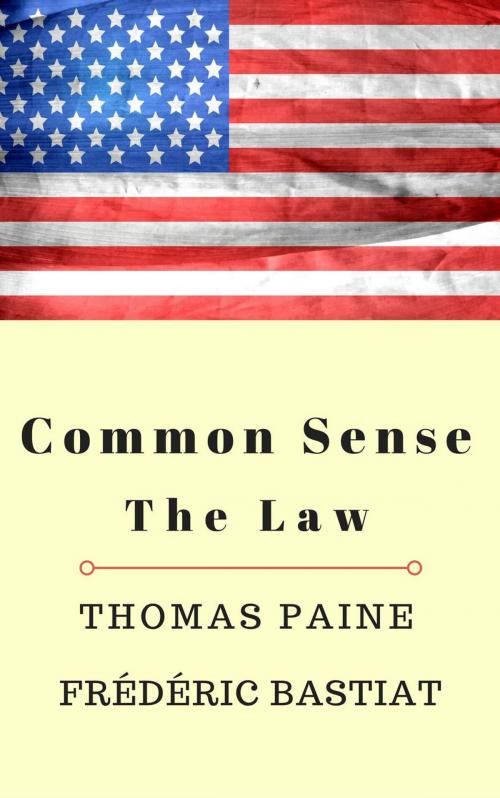Common Sense and The Law
Nonfiction, History, Revolutionary, Americas, United States, Revolutionary Period (1775-1800)| Author: | Hassan Enrique Amundsen | ISBN: | 9781386814801 |
| Publisher: | Ariston Publishing | Publication: | November 8, 2017 |
| Imprint: | Language: | English |
| Author: | Hassan Enrique Amundsen |
| ISBN: | 9781386814801 |
| Publisher: | Ariston Publishing |
| Publication: | November 8, 2017 |
| Imprint: | |
| Language: | English |
Common Sense (Thomas Paine):Very popular and widely read pamphlet, first published in January of 1776, clearly and persuasively argues for American separation from Great Britain and paves the way for the Declaration of Independence. This very influential landmark document attacks the monarchy, cites the evils of government and combines idealism with practical economic concerns.
The Law (Frédéric Bastiat):Original French title La Loi, is a 1849 book by Frédéric Bastiat. It was published one year after the third French Revolution of 1848 and one year before his death of tuberculosis at only age 49. The essay was influenced by John Locke's Second Treatise on Government and in turn influenced Henry Hazlitt's Economics in One Lesson.
In The Law, Bastiat states that "each of us has a natural right — from God — to defend his person, his liberty, and his property". The State is a "substitution of a common force for individual forces" to defend this right. The law becomes perverted when it punishes one's right to self-defense in favor of another's acquired right to plunder.
Common Sense (Thomas Paine):Very popular and widely read pamphlet, first published in January of 1776, clearly and persuasively argues for American separation from Great Britain and paves the way for the Declaration of Independence. This very influential landmark document attacks the monarchy, cites the evils of government and combines idealism with practical economic concerns.
The Law (Frédéric Bastiat):Original French title La Loi, is a 1849 book by Frédéric Bastiat. It was published one year after the third French Revolution of 1848 and one year before his death of tuberculosis at only age 49. The essay was influenced by John Locke's Second Treatise on Government and in turn influenced Henry Hazlitt's Economics in One Lesson.
In The Law, Bastiat states that "each of us has a natural right — from God — to defend his person, his liberty, and his property". The State is a "substitution of a common force for individual forces" to defend this right. The law becomes perverted when it punishes one's right to self-defense in favor of another's acquired right to plunder.















